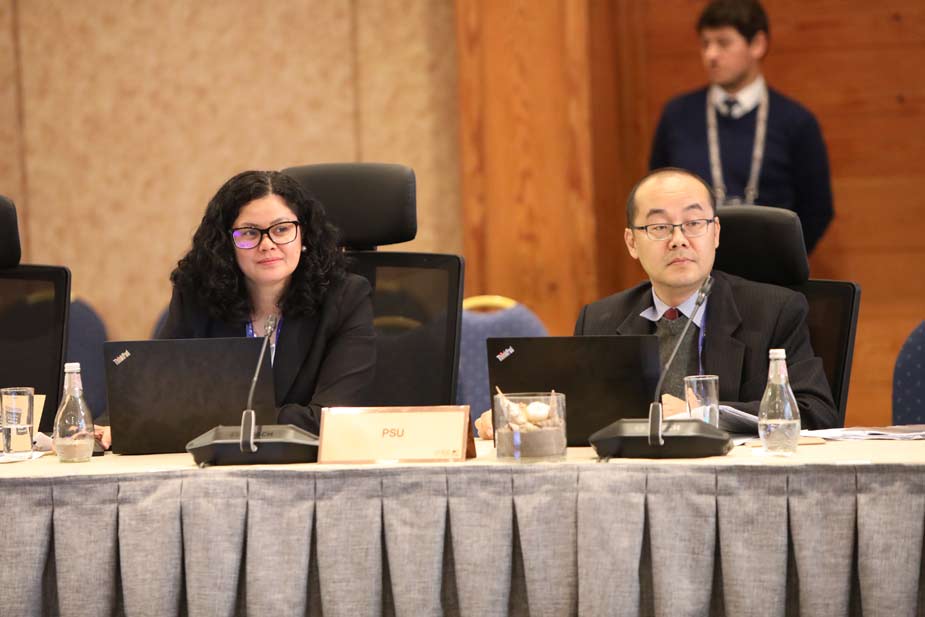APEC Women’s Economic Participation and Social Inclusion: Where We are Now and How We Can Advance Further

About a decade ago, APEC committed to pursue the economic empowerment of women across all walks of life. Data collected from 2008 to 2018 tell us that this commitment has not just been lip service. Over the past ten years, the economic influence of women in the Asia-Pacific region has broadened.
APEC members recognize that women are integral to the health and growth of economies. To improve women’s economic participation, it is important to increase their access to capital and labor markets, allocate resources to enhance education, health and social outcomes, and equip them with relevant skills. Advancing women’s economic empowerment and social inclusion, therefore, requires changing policies and mindsets to address regulatory and sociocultural barriers, including gender stereotypes.
The APEC Women and the Economy Dashboard, a biennial report launched in 2015, provides a snapshot of the status of women in the region based on 95 indicators covering women’s access to capital, assets and markets, health, skills, leadership roles and participation in technology and innovation. By tracking the region’s progress using these indicators, the dashboard provides policymakers a picture of available opportunities and prevailing gaps in the APEC region.
In addition, the dashboard supports gender integration as it identifies areas where gender perspectives could be incorporated in both domestic policies and APEC initiatives.

The authors at a meeting of the Policy Partnership on Women and the Economy in La Serena, Chile.
The recently released 2019 dashboard shows general improvements.
Laws that protect women’s rights to property and inheritance are commonplace in the APEC region. All 21 member economies allow women to work the same night hours as men, which is significant in broadening options for employment.
Women are almost at par with men in literacy and enrollment in schools, with the number of female students enrolled in secondary vocational courses decreasing—but likely because more women are being empowered to pursue higher educational levels.
Most of the 21 APEC economies have instituted laws addressing and penalizing domestic violence, reinforced by establishing specialized courts or procedures that specifically address violence against women. Some economies have taken further steps by creating legislation that mitigates and counters sexual harassment in the workplace.
The above are examples of indicators that affect women specifically and directly. Moreover, the dashboard looks into conditions that not only affect the population as a whole, but also have a significant effect on how women participate in markets and business undertakings. The access of companies to international markets has widened in the last decade, for example. This is good for all companies, including small businesses, many of which are owned by women.
The dashboard also points out some areas where the region is lagging.
We can still do more in terms of women’s access to credit, which continues to be restricted by gender and marital status. Improving access to credit will translate to better financial inclusion for women and will help many to rise up from poverty.
Not all economies allow women to work in nontraditional sectors, such as mining, construction and other physically demanding jobs. This pigeonholing of women’s abilities constitutes a barrier as it hinders women’s entry to the labor market, holds them back from contributing to economic growth, and prevents the economy from achieving full potential.
And while there has been an increase over the past ten years in the number of APEC economies that have enacted laws ensuring equal pay for men and women for work of equal value, this was minimal at best—only two more member economies made the move to close the gender pay gap in the workplace with legislation between 2008 to 2018.
So what can be done within APEC going forward?
We can, for one, increase collaboration between APEC’s Policy Partnership on Women and the Economy and other forums to develop work programs that could assist APEC economies in addressing the gaps we have recorded in the last decade—working together toward improving results across the board. Initiatives to enhance women’s economic engagement are cross-cutting and require the participation of different working groups and institutions.
We can also conduct capacity-building, targeting statistical institutes and women-related government institutions to learn how to produce sex-disaggregated data in many different areas.
Most important of all, APEC members should continue the pursuit of better economic opportunities for women, and recognize that this means not just enacting new regulations, but also enforcing the ones in place. It means ensuring that women are healthy, educated, and skilled so that they can contribute to the economy. It means fostering an environment of equality, inclusivity, and non-discrimination across all industries and sectors.
It means recognizing, once and for all, that women play an integral role in economic progress—we only have to ensure equal rights, equal access and equal opportunities to maximize women’s economic contribution.
Rhea Crisologo Hernando is a researcher and Carlos Kuriyama is a senior analyst at the APEC Policy Support Unit. They are coauthors of the latest APEC Women and the Economy Dashboard 2019.
Click here for an infographic summarizing their findings, or, better yet, download the full report.

